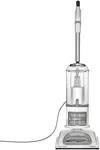Buying Guide for the Best Bagless Upright Vacuum Cleaners
Choosing the right bagless upright vacuum cleaner can make a significant difference in maintaining a clean and healthy home. Bagless models are convenient because they eliminate the need for replacement bags, making them more cost-effective and environmentally friendly. When selecting a vacuum cleaner, it's important to consider various specifications to ensure it meets your cleaning needs and preferences. Here are some key specs to consider and how to navigate them.Suction PowerSuction power is a measure of how effectively a vacuum cleaner can pick up dirt and debris. This is important because higher suction power means better cleaning performance, especially on carpets and rugs. Suction power is often measured in watts or air watts. For light cleaning tasks or hard floors, a lower suction power (around 100-200 air watts) may suffice. For homes with pets, children, or high-traffic areas, a higher suction power (200+ air watts) is recommended. Consider your cleaning needs and the types of surfaces in your home when choosing the right suction power.
Filtration SystemThe filtration system in a vacuum cleaner determines how well it can trap dust, allergens, and other particles. This is crucial for maintaining indoor air quality, especially for allergy sufferers. HEPA (High-Efficiency Particulate Air) filters are the gold standard, capturing 99.97% of particles as small as 0.3 microns. If you have allergies or asthma, look for a vacuum with a HEPA filter. For general use, a standard multi-layer filtration system may be adequate. Consider your health needs and the presence of pets when evaluating filtration systems.
Dustbin CapacityDustbin capacity refers to the amount of dirt and debris the vacuum can hold before needing to be emptied. This is important for convenience and efficiency, as a larger capacity means fewer trips to the trash can. Dustbin capacities typically range from 0.5 to 2 liters. For smaller homes or apartments, a smaller capacity (0.5-1 liter) may be sufficient. For larger homes or those with pets, a larger capacity (1.5-2 liters) is more practical. Consider the size of your living space and how often you want to empty the dustbin when choosing the right capacity.
Weight and ManeuverabilityThe weight and maneuverability of a vacuum cleaner affect how easy it is to use, especially if you have multiple floors or need to carry it up and down stairs. Lighter models (under 10 pounds) are easier to handle and maneuver, making them ideal for smaller spaces or those with limited strength. Heavier models (over 15 pounds) may offer more power and features but can be cumbersome to move around. Consider your physical capabilities and the layout of your home when selecting a vacuum cleaner with the right weight and maneuverability.
Attachments and AccessoriesAttachments and accessories enhance the versatility of a vacuum cleaner, allowing you to clean various surfaces and hard-to-reach areas. Common attachments include crevice tools, dusting brushes, and upholstery tools. These are important for detailed cleaning tasks, such as cleaning furniture, baseboards, and tight corners. If you have pets, look for models with pet-specific tools like motorized brushes. Consider the types of surfaces and areas you need to clean when evaluating the attachments and accessories that come with the vacuum cleaner.
Noise LevelThe noise level of a vacuum cleaner can impact your comfort and convenience, especially if you have young children, pets, or sensitive ears. Noise levels are measured in decibels (dB), with lower numbers indicating quieter operation. Vacuums typically range from 60 to 80 dB. For a quieter experience, look for models with noise levels under 70 dB. If noise is not a major concern, standard models with higher noise levels may be acceptable. Consider your household's sensitivity to noise when choosing a vacuum cleaner with an appropriate noise level.



















